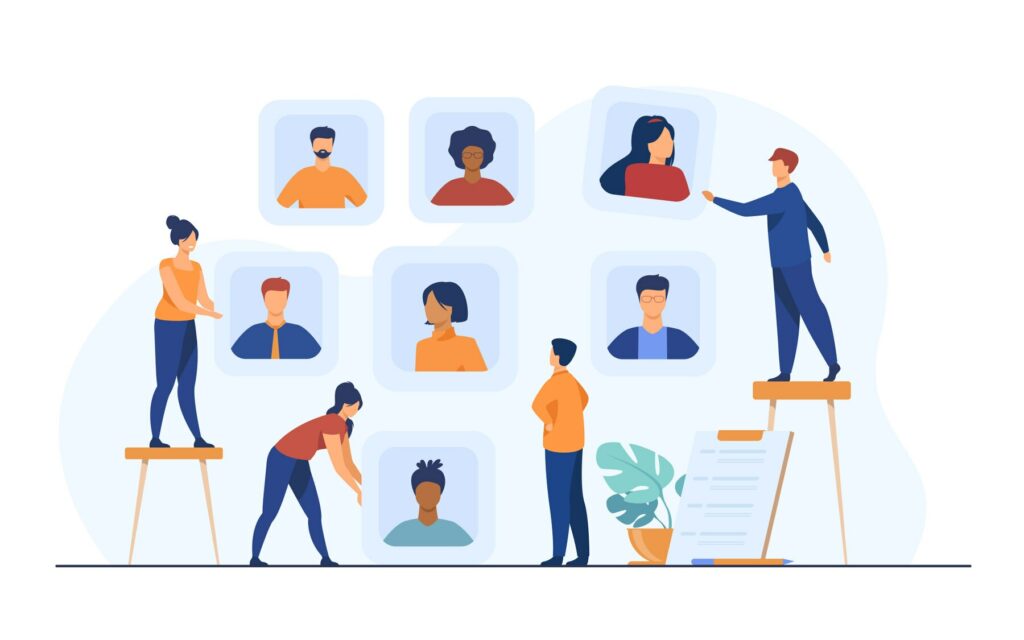How can you promote internal mobility within your company?
Internal mobility is a powerful lever for talent development and employee loyalty. It enables companies to maximize the potential of their teams while offering rewarding career opportunities. But how do you effectively promote internal mobility? This article explores key strategies for promoting internal mobility in your organization.

Why promote internal mobility?
Optimizing in-house talent
Encouraging internal mobility enables you to keep knowledge in-house. In fact, your talents have the knowledge and acquired the skills within your company. By giving them the choice of internal opportunities, they’ll be able to put these skills to work for your company’s overall performance.
Employee loyalty
Depending on the company, talent can stay for 10 or even 15 years. But we’re now seeing a trend evolve in many sectors where employees change companies regularly. Internal mobility therefore plays a crucial role in employee loyalty. By offering opportunities for career progression and personal development, companies can reduce turnover and retain their best talent. Make your talent want to stay by giving them a clear view of their future!
Lower recruitment costs
External recruitment is often costly and time-consuming. By promoting internal mobility, companies can reduce these costs by exploiting the skills and experience of their current employees. Because you know your employees, you have a view on their performance and results, and you can be sure of keeping the best talent within your company. Not to mention that these talents already have the culture in place, the integration and knowledge of other talents.
How do you identify transferable skills?
Assess employees’ current skills
To encourage internal mobility, it’s essential to know what skills employees already have. Regular appraisals and the use of skills assessment tools can help identify talents and transferable skills within the company.
Using career interviews to promote internal mobility
Career interviews are an excellent way of identifying employees’ professional aspirations and the skills they wish to develop. These interviews help us to better understand each employee’s ambitions and to align internal mobility opportunities with their personal objectives.
Analyze business needs
It’s important to align employee skills with the company’s strategic needs. By analyzing the skills required for different roles, managers can better target employees who could benefit from internal mobility. “Identifying transferable skills is essential for effective management of internal mobility” (HR Culture).
What are the best practices for promoting internal mobility?
Providing training and development opportunities
To encourage internal mobility, companies need to invest in employee training and development. Offering ongoing training programs, workshops and certifications can help employees acquire the skills they need for new roles.
Creating a mobility culture to encourage internal mobility
Encouraging a culture of mobility within the company is crucial. This includes communicating openly about mobility opportunities, recognizing successes and supporting employees who wish to progress. “Transparency and communication are key to promoting internal mobility” (CCI).
Set up mentoring programs
Mentoring is a powerful tool for supporting internal mobility. Mentors can offer advice, share their experience and help employees navigate new roles. This not only eases the transition, but also reinforces the company’s culture of support and collaboration.
A brief summary of strategies for promoting internal mobility:
- Assess employees’ current skills
- Using career interviews
- Analyze business needs
- Providing training and development opportunities
- Creating a culture of mobility
- Set up mentoring programs
How do you measure the impact of internal mobility?
Monitor key performance indicators (KPIs)
To measure the effectiveness of internal mobility initiatives, it is important to track key performance indicators (KPIS). This can include internal promotion rates, talent retention rates, employee satisfaction and team performance.
How can you encourage internal mobility by collecting regular feedback?
Employee feedback is essential for understanding the impact of internal mobility initiatives. Organizing regular surveys and interviews can provide valuable information on employee experience and identify areas for improvement.
Analyze and monitor training program results
Evaluating the results of training and development programs is crucial to measuring their effectiveness. This includes analysis of employee progress, certification success rates and impact on overall company performance.
Encouraging internal mobility is a winning strategy for companies wishing to maximize the potential of their talent, improve employee retention and reduce recruitment costs. By implementing effective practices such as skills assessment, continuous training, creating a culture of mobility and mentoring, companies can create an environment conducive to growth and professional development. Ultimately, a proactive approach to internal mobility contributes not only to employee success, but also to that of the company.
Good to know! quarksUp is an HRIS solution for managing the entire employee cycle.
Thanks to this HR tool, everything can be done online. As an HR manager, you’ll be in charge of all our employees’ digital activities. With its modular offer, quarksUp intervenes from recruitment to employee off-boarding.
You may also be interested in 😊

GPEC: Definition and implementation tools
What is GPEC (Gestion Prévisionnelle des Emplois et des Compétences) and how can it be implemented? quarksUp, expert in HRIS, answers your questions.

Annual appraisal interview: objective, grid
The annual appraisal interview is an opportunity to take stock of performance. quarksUp, expert in HRIS, guides you in preparing your objectives and evaluation grids.

